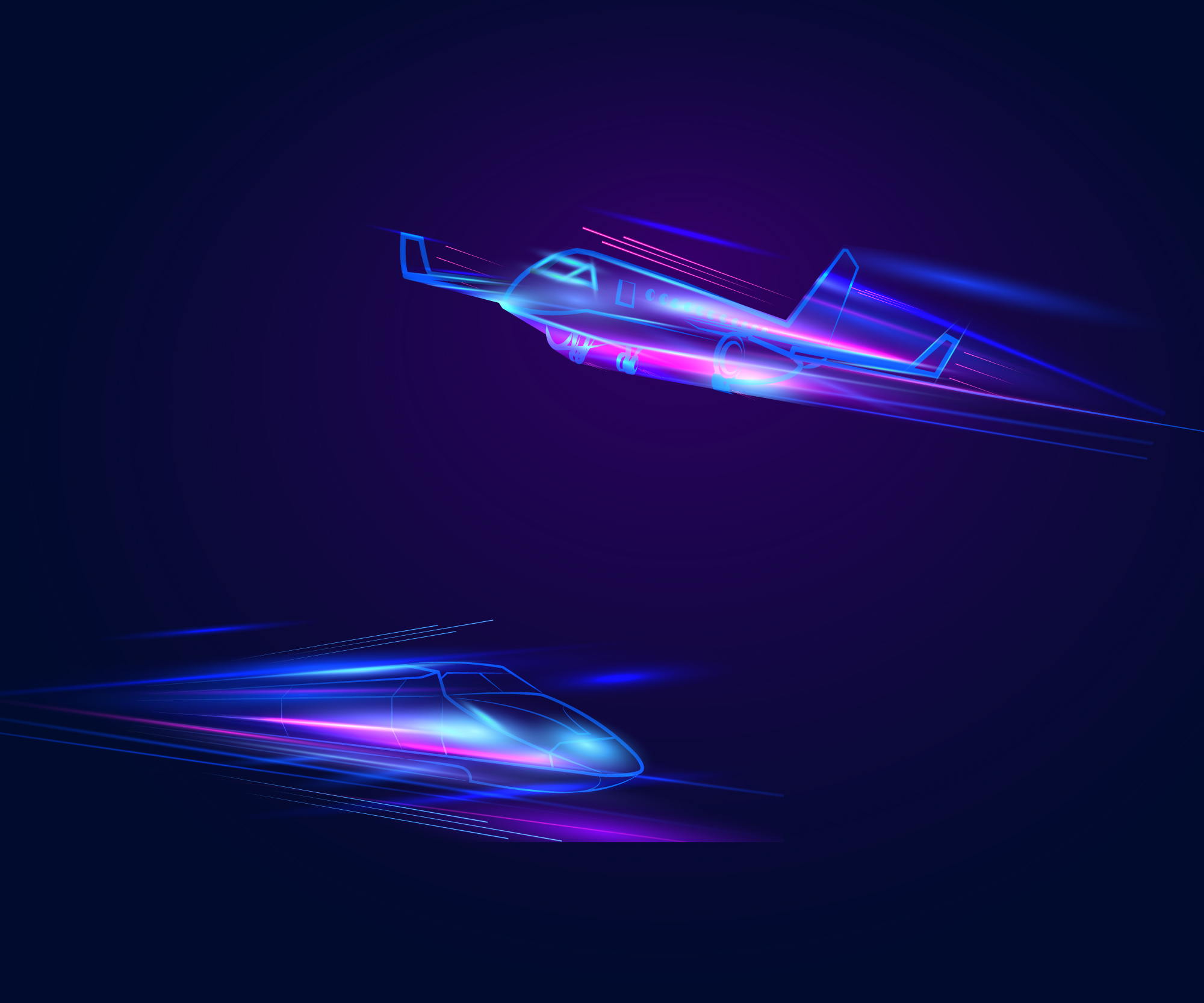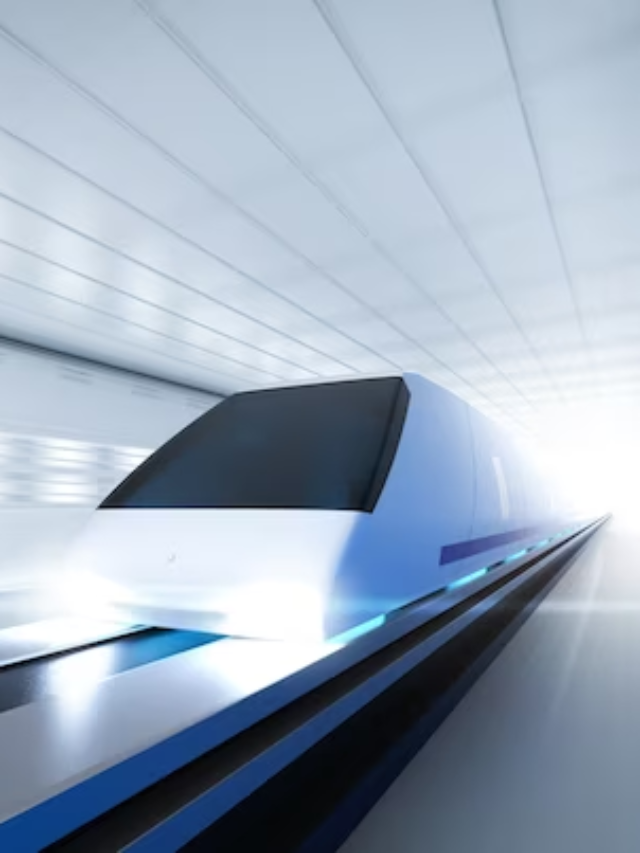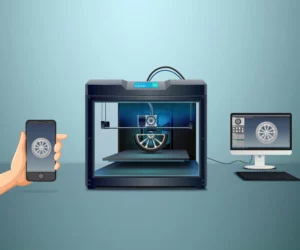
Teleportation—something that I wanted this article to be about, but unfortunately, we just aren’t quite there yet. Road signs are famous for screaming out, “Speed thrills but also kills.” However, when it comes to humanity’s tryst with speedy travel, we tend only to read the first part. When walking and running were no longer fast enough, we rode animals; animals gave way to wheels and motorised vehicles. Soon, trains and planes outran them. And it all happened so that I could write this article and introduce you to the next generation of thrilling high-speed travel.
The basics of high-speed travel
We must understand a few fundamentals before we embark on this journey. Firstly, increasing speed requires a tremendous amount of energy. For example, going twice as fast requires four times the energy; three times as fast, nine times the energy and so on. Therefore, harnessing and generating sufficient energy have been one of the main challenges in extremely high-speed travel.
Today, we are developing technology to travel faster than the speed of sound (supersonic), five times faster than the speed of sound (hypersonic), as well as faster than the speed of light (thankfully, that is only reserved for space travel as of now).
One usually stumbles upon train, flight, and space travel when thinking of high-speed travel. For this article, however, we will only be looking at trains and flights.
On track with high-speed travel
We begin closer to earth with fast-paced trains. Transportation technologies will soon make the following models more widely operational by cutting out as much ground friction and air resistance as possible.
Maglev
We begin by looking at Maglev. This is Magnetic Levitation and not the name of some Russian scientist. More specifically, we are looking at Maglev in Japan. Japan’s new Maglev trains have clocked remarkable speeds of up to 603 kmph.
Simply put, a series of magnets push and pull the trains forward. The train travels on wheels until it reaches 150 kmph, at which point it switches to magnetic levitation. Permanent magnets and electromagnets constantly adjust the train to ensure a smooth ride at a very high speed. But, for all intents and purposes, on the inside, it does not feel as though one is moving at all.
Maglev is not open for commercial purposes yet. Still, through a lottery system, people can win the chance to ride on the train and experience it.
These trains are a marked improvement on other Maglev trains worldwide, including Japan’s. China and South Korea also boast of using Maglev, while Germany and the US have test tracks for their Maglev trains. These Maglev trains are for short distances, such as covering airports.
Hyperloop
When Elon Musk first proposed Hyperloop in 2013, it seemed out of a movie. Nevertheless, the Hyperloop works on similar principles as the Maglev, using magnetic levitation to move forward. One crucial difference, however, is that the Hyperloop will function inside a vacuum-sealed tube that would further decrease the air resistance encountered, making the train go even faster.
Another significant difference is that it will be possible to use the Hyperloop for long distances allowing people to travel between cities very quickly. Thus, this form of high-speed travel could open up the prospect of daily commuting between cities. Living in one city and working in another could become a reality as travel times would be drastically shorter.
Hyperloop One (formerly Virgin Hyperloop) and Hyperloop Transportation Technologies are two other companies working on the same technology.
High-speed travel: up in the air
Trains like the Maglev and the Hyperloop are exciting. Still, they will require extensive infrastructure before they can come close to being a reality. And even when they have all of it, they are unlikely to be as fast as flights.
Commercial flights usually fly at around 460-575 mph. The famous Concorde flew at over 1300 mph, well over the 767 mph speed of sound. However, the problems with flights are quite well known. They use a great deal of fuel and create a lot of noise, among others. Concorde was retired in 2003 for reasons that included these.
Boom Supersonic
Boom Supersonic is a company founded in 2014 aiming to create a new generation of supersonic passenger jets. These planes will be able to fly at 1451 mph and make the journey from San Francisco to Tokyo in under 6 hours. They use Sustainable Aviation Fuels and are far quieter too.
Naturally, there has been plenty of interest in these planes. Virgin Group, Boeing HorizonX, and GE Aviation are all investors or partners. The company has also signed letters of intent with many airlines to purchase 76 planes.
While they are still in the early stages of its development process, the company is not shying away from making bold claims. Their new aircraft, Overture, could be twice as fast as the fastest commercial aircraft. Its engine features a propulsion system which will function at net zero carbon. They have used additive manufacturing to create some of its components. This aircraft could also help airlines lower operation costs by 10% because the engine offers better on-wing performance (i.e., the plane stays in flight longer). The founder and CEO, Blake Scholl, has gone on record to say that their flights can get people anywhere in the world in under four hours for just $100.
VeriJet
But perhaps getting somewhere faster isn’t always about building machines that can move faster. Maybe it is about finding ways to decrease the time taken for a journey. The CEO of VeriJet, Richard Kane, has interesting thoughts on the matter. In his view, most of the time spent flying is actually spent driving to the airport, getting through security, dealing with crowds, and then going from the airport to the destination. Smaller and more local airports already do exist across the US, and travelling through them would drastically decrease travel time.
VeriJet is a company that builds smaller, more personal, single-engine jet planes that can fly short distances. AI would control these very quiet flights, so they can use the smaller, more local airports without causing too much disturbance to the neighbourhood. The planes also use far less fuel, if they use fuel at all. Kane even mentions one plane that flew 1400 miles on only $18 worth of electricity. These are not ideas that could one day come to fruition. These planes exist now, and people can book and use them today.
Is high-speed travel ready for lift-off?
When envisioning the future of high-speed travel, one must consider a few things. Safety, of course, is a significant aspect that one cannot ignore. When trains first hit the scene, people feared travelling at speeds such as 15 or 20 kmph. The stakes are higher now as we break the sound barrier. Infrastructure and software must be well-built and maintained to ensure that catastrophes do not occur, even though we know that, in all likelihood, they will.
Supersonic and hypersonic travel, Maglev and Hyperloop, are exhilarating, but most are still being developed. We do not know how each one will pan out—which will succeed and which will be forgotten. However, given what we know of the design stages of these technologies, we can say with some certainty that the future of high-speed travel will likely involve more environmentally sustainable travel, increased options and probably more personalised transport. I await this world with equal measures of fear and curiosity. I do not know what it will look like, but if the early signs are anything to go by, then we seem to be on the right track.



